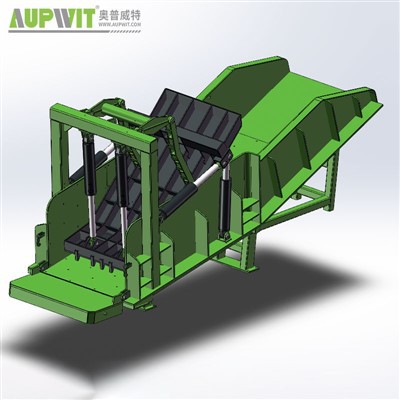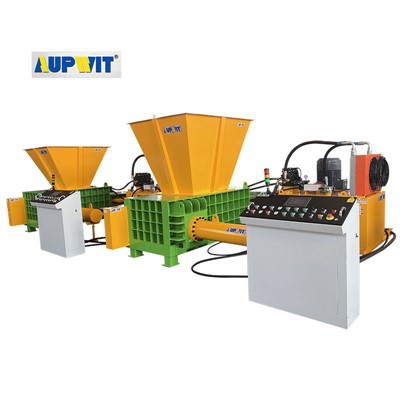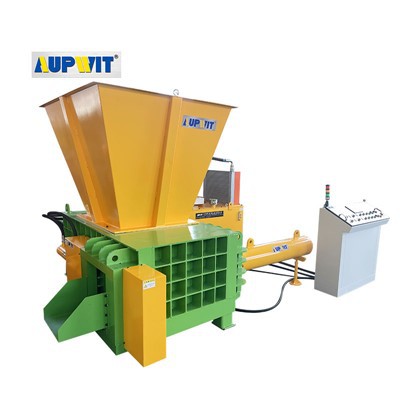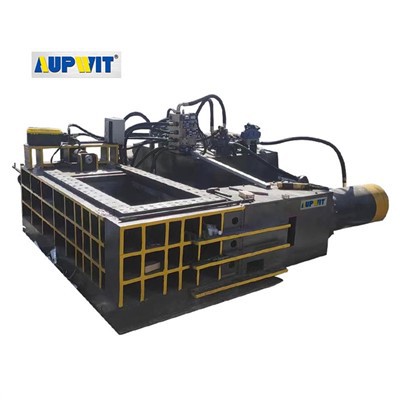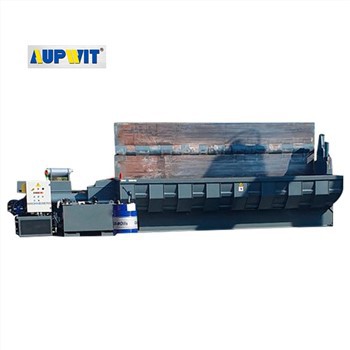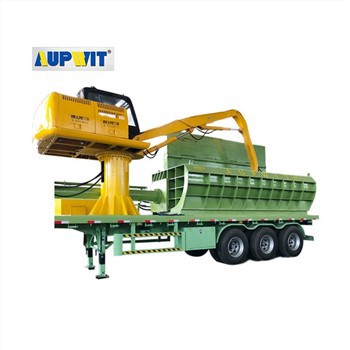Introduction
Automatic metal balers have become essential tools in the recycling and waste management industry, providing a highly efficient and automated solution for compacting metal waste into manageable bales. These machines play a crucial role in enhancing the recycling process, reducing waste volume, and increasing operational efficiency. This article explores the features, working principles, applications, and benefits of automatic metal balers.
What is an Automatic Metal Baler?
An automatic metal baler is a mechanical device designed to compress metal waste such as aluminum, steel, copper, and other metals into compact bales for easier handling, storage, and transportation. Unlike manual balers, automatic models feature integrated hydraulic systems, sensors, and automated controls that allow for continuous operation with minimal human intervention.
Key Features of Automatic Metal Balers
-
Automatic Feeding System: Many automatic balers are equipped with advanced feeding mechanisms, such as conveyor belts or automatic shredders, which continuously feed scrap metal into the baling chamber. This allows for uninterrupted operation and reduces the need for manual loading.
-
Hydraulic Pressing Mechanism: Hydraulic presses are used to compact the metal waste into dense bales. These presses exert a significant force, ensuring that the waste is tightly compacted to reduce its volume and optimize storage space.
-
PLC Control System: Automatic balers feature programmable logic controllers (PLC) that manage the entire baling process. This allows for precise control of feeding, pressing, and ejection cycles, ensuring consistent performance and minimizing downtime.
-
High Throughput: Automatic balers are capable of handling large volumes of metal scrap, making them ideal for industrial applications where high-speed processing is required. They can produce numerous bales per hour, enhancing productivity and operational efficiency.
-
Energy Efficiency: Many modern automatic balers are designed with energy-efficient components that reduce power consumption, making them both environmentally friendly and cost-effective in the long run.
Working Principle of Automatic Metal Balers
The operation of an automatic metal baler typically follows these steps:
-
Loading: Metal scrap is loaded into the feeding area, either manually or via an automatic conveyor system. The baler’s sensors detect the presence of scrap and initiate the baling process.
-
Compression: Once the scrap enters the baling chamber, the hydraulic press is activated. The metal is compressed under high pressure, reducing its volume and forming it into a dense, compact bale.
-
Bale Formation: The compressed metal is then formed into a rectangular or cylindrical shape, depending on the baler's design. The bale is held in place by hydraulic mechanisms.
-
Ejection: Once the bale is formed, it is ejected from the machine using hydraulic force, and the next cycle begins automatically.
Applications of Automatic Metal Balers
-
Scrap Metal Recycling: Automatic metal balers are widely used in scrap yards and recycling centers for processing metal scrap into compact bales. This makes it easier to transport, store, and sell the scrap to recyclers or manufacturers.
-
Industrial Waste Management: Industries that generate metal waste, such as automotive manufacturing, construction, and electronics, use automatic balers to efficiently handle their scrap materials.
-
Aluminum and Steel Mills: Mills that produce aluminum and steel often use automatic balers to process metal shavings, turnings, and offcuts, preparing them for recycling or reuse in the production process.
-
Municipal Waste Management: Some municipalities use automatic metal balers to process metal waste from households or businesses, reducing landfill waste and promoting recycling efforts.
Benefits of Automatic Metal Balers
-
Increased Efficiency: The automation of the baling process significantly increases throughput and reduces labor costs. The continuous operation of automatic balers ensures that more metal waste is processed within a shorter period.
-
Space Optimization: By compressing metal scrap into dense bales, automatic balers reduce the amount of space needed for storage, making it easier to manage large volumes of waste.
-
Lower Labor Costs: With minimal manual intervention required, businesses can reduce labor costs associated with handling metal scrap. The automated system can operate 24/7, further increasing productivity.
-
Improved Safety: The automation of the baling process also reduces the risk of accidents that can occur when manually handling metal waste. Automated systems are designed with safety features such as emergency stop buttons and overload protection.
-
Environmental Benefits: By compacting metal waste into bales, automatic balers reduce the carbon footprint associated with the transportation and storage of scrap. The recycling process also conserves natural resources and reduces the need for virgin materials.
Conclusion
Automatic metal balers are transforming the way industries handle metal scrap, offering a combination of efficiency, safety, and environmental benefits. With their ability to handle large volumes of metal waste, minimize labor costs, and promote recycling, these machines are an invaluable asset for businesses in the waste management and recycling sectors. As technology continues to evolve, automatic metal balers are likely to become even more advanced, further enhancing their capabilities and contributing to a more sustainable future.


